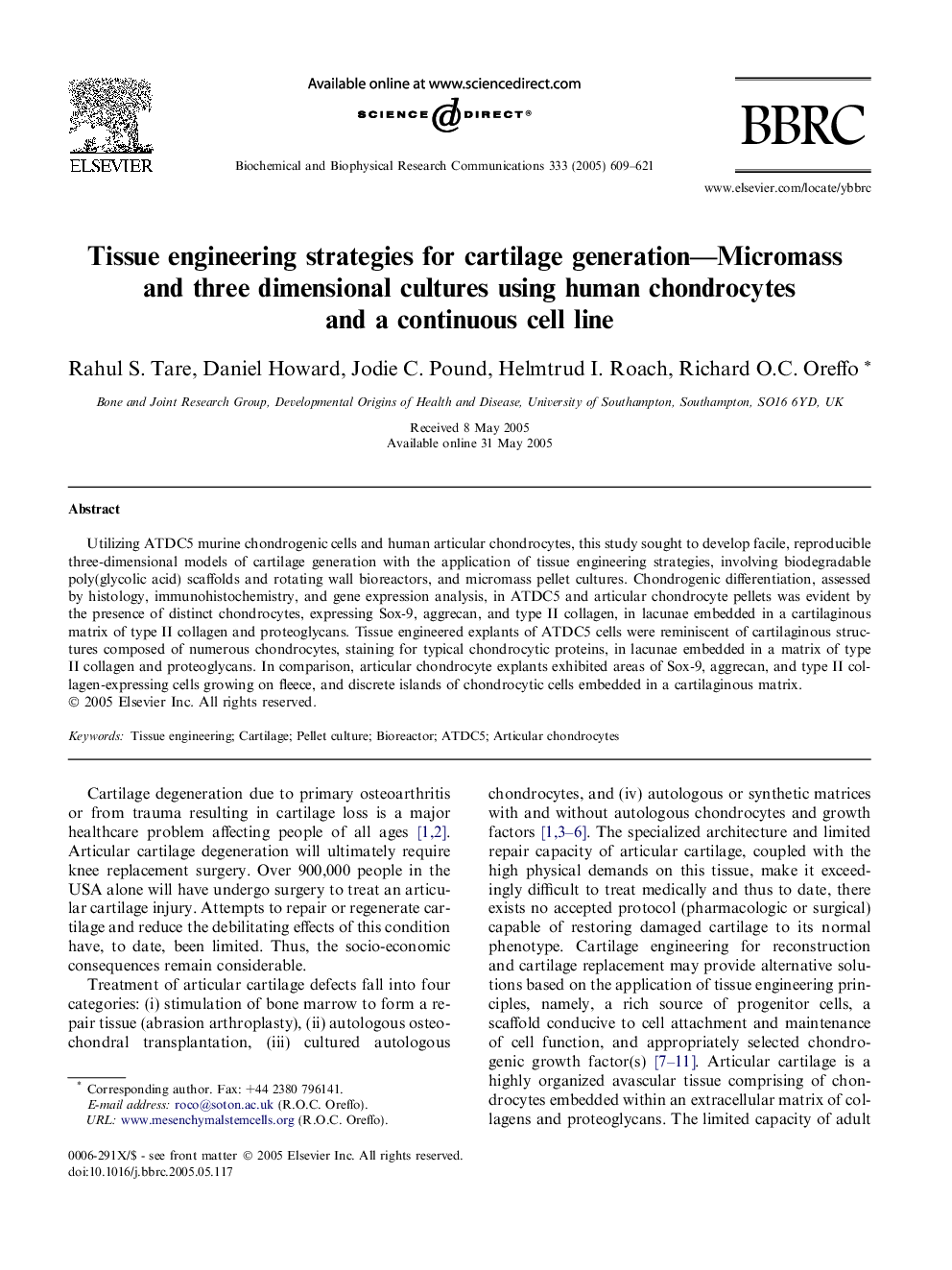| Article ID | Journal | Published Year | Pages | File Type |
|---|---|---|---|---|
| 10770123 | Biochemical and Biophysical Research Communications | 2005 | 13 Pages |
Abstract
Utilizing ATDC5 murine chondrogenic cells and human articular chondrocytes, this study sought to develop facile, reproducible three-dimensional models of cartilage generation with the application of tissue engineering strategies, involving biodegradable poly(glycolic acid) scaffolds and rotating wall bioreactors, and micromass pellet cultures. Chondrogenic differentiation, assessed by histology, immunohistochemistry, and gene expression analysis, in ATDC5 and articular chondrocyte pellets was evident by the presence of distinct chondrocytes, expressing Sox-9, aggrecan, and type II collagen, in lacunae embedded in a cartilaginous matrix of type II collagen and proteoglycans. Tissue engineered explants of ATDC5 cells were reminiscent of cartilaginous structures composed of numerous chondrocytes, staining for typical chondrocytic proteins, in lacunae embedded in a matrix of type II collagen and proteoglycans. In comparison, articular chondrocyte explants exhibited areas of Sox-9, aggrecan, and type II collagen-expressing cells growing on fleece, and discrete islands of chondrocytic cells embedded in a cartilaginous matrix.
Related Topics
Life Sciences
Biochemistry, Genetics and Molecular Biology
Biochemistry
Authors
Rahul S. Tare, Daniel Howard, Jodie C. Pound, Helmtrud I. Roach, Richard O.C. Oreffo,
